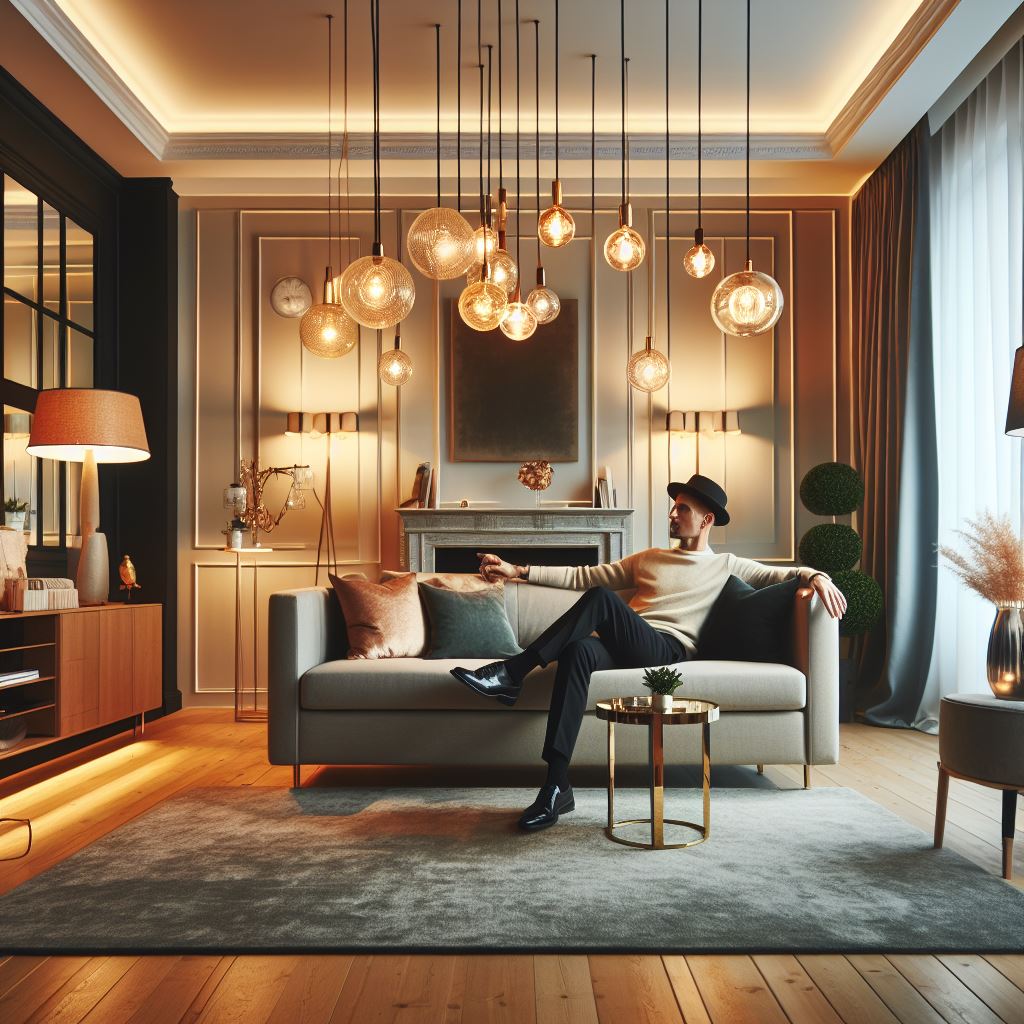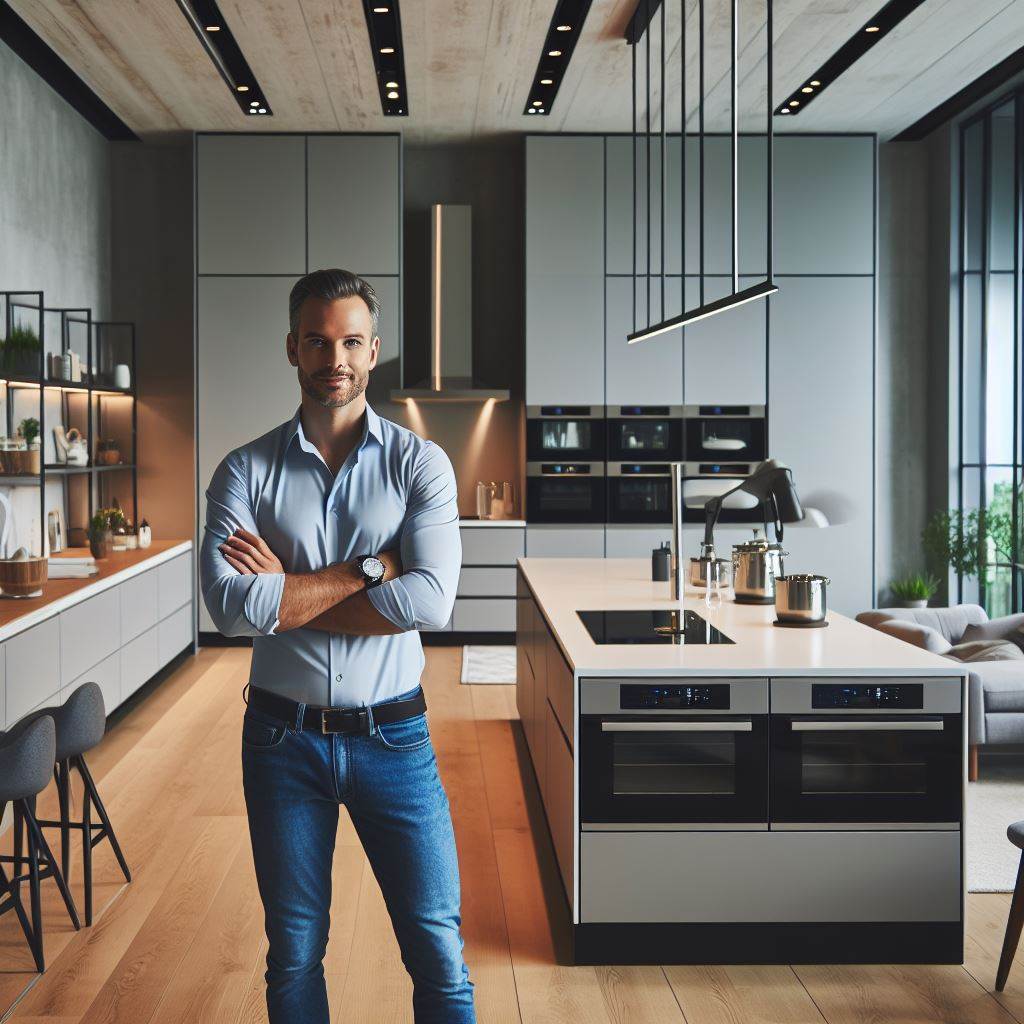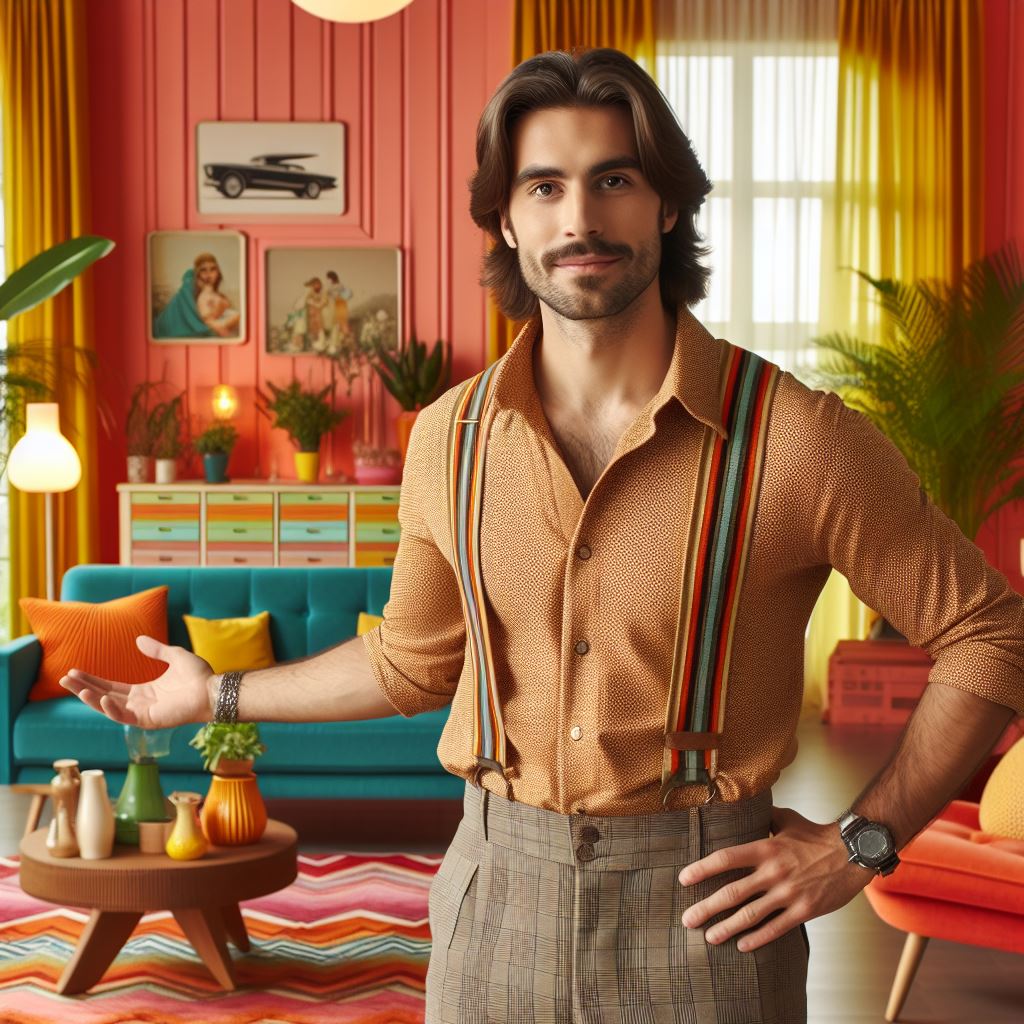Introduction
Interior lighting is set to become a crucial element in 2024, transforming spaces with innovative trends.
Did you know that lighting can significantly impact our mood and productivity levels?
Lighting plays a critical role in interior design, enhancing the overall aesthetics and functionality of a space.
In 2024, it is expected to make even more significant strides, revolutionizing the way we experience our surroundings.
With cutting-edge advancements in technology, lighting solutions are becoming smarter, more efficient, and customizable.
Gone are the days when lighting was just about providing illumination; it has evolved to create immersive environments that cater to individual preferences.
Imagine walking into a room where the lighting adapts to your mood, energizing you in the morning and offering a calming ambiance in the evening.
Thanks to breakthroughs in lighting controls and automation, this dream will soon become a reality.
The concept of circadian lighting is gaining traction, as it aims to replicate natural daylight patterns to support our body’s internal clock.
This means lighting systems that adjust throughout the day, mimicking the sun’s intensity and color temperature, promoting better sleep, and overall well-being.
Moreover, lighting fixtures are becoming more versatile and customizable, allowing individuals to have complete control over their lighting environment.
With the integration of smart home technology, you can now program your lights to turn on and off, adjust brightness, and even change colors with a simple voice command or a tap on your smartphone.
In fact, the significance of interior lighting in 2024 is tremendous.
It has transcended its functional role, becoming a key element in creating personalized and immersive environments.
So, get ready to witness the brightest trends that will transform the way we perceive and interact with our living spaces.
Smart Lighting Technology
The growing popularity of smart lighting systems
Smart lighting technology has been on the rise in recent years, and its popularity continues to grow in 2024.
This innovative solution allows users to control their lighting systems using smartphones or voice assistants, providing convenience and enhancing the overall experience at home or in other environments.
The benefits of controlling lighting with smartphones or voice assistants
One of the key benefits of smart lighting systems is the ability to control lighting remotely.
With just a few taps on a smartphone or a simple voice command, users can adjust the brightness, color, and even the mood of the lighting in any room.
This feature is particularly useful when coming home late or wanting to create a specific ambiance for different activities or occasions.
Furthermore, energy efficiency is a crucial aspect of smart lighting systems.
In 2024, these systems have become even more advanced in terms of maximizing energy savings.
For instance, smart lights can adapt to the natural lighting conditions outside and adjust the indoor lighting accordingly.
This not only reduces energy consumption but also helps create a more sustainable and environmentally friendly living space.
Examples of smart lighting features in 2024
Another exciting feature of smart lighting technology in 2024 is the ability to create personalized lighting schedules.
Users can program their lights to turn on or off at specific times, ensuring that the lighting matches their daily routines.
For instance, lights can gradually brighten to wake up the occupants naturally or automatically dim as bedtime approaches.
This level of automation adds convenience and comfort to daily life.
Color-changing options have also become increasingly popular in smart lighting systems.
With a wide range of colors to choose from, users can set the desired mood for any occasion.
Whether they want a cozy atmosphere for a movie night or vibrant lighting for a party, smart lighting systems can deliver the perfect ambiance with just a touch.
Moreover, smart lighting technology has seamlessly integrated with voice assistants like Amazon Alexa or Google Assistant.
This allows users to control their lights through voice commands, making it even easier and more convenient to adjust the lighting in various settings.
With simple phrases, such as “Hey Alexa, dim the living room lights,” users can effortlessly create the desired lighting environment without even lifting a finger.
In sum, smart lighting technology has experienced significant advancements in 2024, making it one of the brightest trends in interior lighting.
The growing popularity of these systems can be attributed to their convenience, energy efficiency, and the ability to create personalized lighting experiences.
With features like remote control, energy-saving capabilities, personalized scheduling, color-changing options, and voice assistant integration, smart lighting has truly transformed the way we illuminate our spaces.
Read: Affordable Eco-Friendly Home Upgrades
Energy-Efficient LEDs
In today’s rapidly evolving world, lighting technology has advanced in leaps and bounds.
Among the various options available, LEDs (Light Emitting Diodes) have emerged as a dominant force in the interior lighting industry.
Here, we explore the reasons behind their dominance, the advantages they offer, and the different types of fixtures available.
Advantages of LED Technology
- Energy Efficiency: One of the primary reasons for the widespread adoption of LEDs is their exceptional energy efficiency. LEDs consume significantly less energy compared to traditional incandescent and fluorescent bulbs, making them an environmentally friendly lighting choice.
- Longer Lifespan: LEDs have an impressive longevity that surpasses other lighting technologies. On average, LEDs can last up to 50,000 hours or more, meaning fewer replacements and reduced maintenance costs.
- Enhanced Durability: LED fixtures are highly durable due to their solid-state construction, making them resistant to shock, vibrations, and extreme temperature variations. This durability ensures their reliability in a variety of applications.
- Design Flexibility: LED technology allows for small and compact lighting fixtures, making it possible to incorporate them into various design elements. They can be seamlessly integrated into furniture, walls, and ceilings, enhancing the aesthetics of any space.
- Instantaneous Lighting: Unlike traditional lighting options that take time to reach full brightness, LEDs provide instant illumination. This feature is particularly useful in areas where immediate bright light is required, such as in commercial spaces.
- Environmental Benefits: LEDs are free of toxic materials like mercury and lead, making them safer for both human health and the environment. Their reduced energy consumption also helps lower carbon emissions, contributing to a greener planet.
Types of LED Fixtures and Their Applications
- LED Bulbs: These are the most common LED fixtures and can replace traditional screw-in bulbs. They are suitable for various applications, from residential homes to commercial settings.
- LED Strip Lights: These flexible strips with adhesive backing allow for versatile lighting designs. They can be used as accent lighting under cabinets, in cove ceilings, or even as decorative features.
- LED Downlights: These recessed fixtures provide focused lighting and are commonly used in residential kitchens, bathrooms, and commercial spaces like retail stores or galleries.
- LED Panel Lights: Flat and slim, these fixtures are ideal for illuminating large areas such as offices, hospitals, or educational institutions. Their uniform light distribution creates a pleasant ambiance.
- LED Track Lights: With adjustable heads, these fixtures are perfect for highlighting specific objects or areas, making them popular in galleries, museums, or retail spaces to showcase products.
- LED Pendant Lights: These suspended fixtures offer both functional and aesthetic benefits, providing focused lighting while adding a touch of elegance to interiors. They are commonly used in dining areas or living rooms.
As the demand for energy-efficient, long-lasting, and versatile lighting continues to grow, LED technology remains at the forefront.
Whether in homes, offices, or public spaces, the dominance of LEDs in lighting fixtures is set to shape the bright future of interior lighting in 2024 and beyond.
Read: Outdoor Spaces Redefined: 2024 Design Ideas

Human-Centric Lighting
In recent years, there has been a growing focus on the impact of lighting on human well-being and productivity.
This has resulted in the emergence of a new concept called human-centric lighting. Human-centric lighting, also known as circadian lighting, refers to the design and implementation of lighting systems that mimic natural daylight and prioritize human needs.
Importance in residential and commercial spaces
- Better Sleep Patterns: Our bodies are naturally tuned to the cycle of natural daylight, which helps regulate our sleep patterns. Human-centric lighting can simulate this cycle, ensuring that our bodies receive the correct cues for sleep and wakefulness. This is especially important in spaces where people spend a significant amount of time, such as homes and workplaces.
- Improved Mood and Well-being: Lighting has a significant impact on our mood and overall well-being. Human-centric lighting can replicate the warm, pleasant lighting of sunrise and sunset, which has been shown to positively affect our mood and reduce stress. In commercial spaces, this can lead to higher employee satisfaction and reduced absenteeism.
- Increased Productivity: Studies have shown that lighting can have a direct influence on our cognitive abilities and productivity levels. Human-centric lighting can stimulate alertness during daytime hours, improving concentration and focus. It can also adjust lighting levels to promote relaxation during breaks, contributing to mental rejuvenation.
Enhancing well-being and productivity
- Circadian Rhythm Synchronization: Human-centric lighting can help synchronize our internal body clock, or circadian rhythm, with the external environment. This synchronization has been linked to better sleep quality, increased energy levels, and improved cognitive function. By aligning our sleep-wake cycle with natural daylight, human-centric lighting can optimize our overall well-being.
- Personalized Illumination: Another advantage of human-centric lighting is its ability to personalize illumination based on individual preferences and needs. This can be achieved through advanced lighting control systems that allow users to adjust the intensity and color temperature of the lighting to suit their specific requirements. Personalization promotes a sense of control and comfort, further enhancing well-being.
- Biologically Effective Lighting: Human-centric lighting focuses on providing biologically effective lighting, which means lighting that supports our physiological and psychological needs. This includes adequate light levels, minimal glare, and the right color temperature. By adhering to these principles, human-centric lighting creates an environment that promotes optimum visual comfort and well-being.
In essence, human-centric lighting is a rapidly evolving trend in the field of interior lighting.
Its increasing importance in residential and commercial spaces is driven by the desire to create environments that prioritize human well-being and productivity.
By simulating natural daylight, human-centric lighting enhances sleep patterns, improves mood and well-being, and boosts productivity.
With its ability to synchronize circadian rhythms and offer personalized illumination, human-centric lighting represents a significant leap forward in creating spaces that promote a better quality of life.
Read: Save on Renovation: Expert Tricks
Biophilic Lighting: Enhancing Spaces with Nature
Biophilic lighting, also known as nature-inspired lighting, aims to foster a deep connection with the natural world within our built environments.
By incorporating natural elements into lighting design, this trend recognizes the innate human desire to be surrounded by nature, even when indoors.
Benefits of Incorporating Natural Elements into Lighting Design
- Improved Well-being: Biophilic lighting has been proven to enhance our overall well-being and comfort levels.
- Increased Productivity: By bringing elements of nature indoors, biophilic lighting can enhance productivity and concentration levels.
- Stress Reduction: Studies have shown that exposure to natural lighting can reduce stress and anxiety.
- Enhanced Cognitive Function: Biophilic lighting can improve cognitive function and creativity, benefiting educational and work settings.
- Positive Impact on Health: Exposure to natural light has been linked to improved sleep patterns and faster recovering times.
Examples of Biophilic Lighting Fixtures and Their Applications
- Natural Light Simulators: These fixtures mimic the patterns and intensity of natural light, creating a soothing effect. They are commonly used in healthcare facilities and offices.
- Sunlight Tubes: These fixtures capture and redirect sunlight, making it possible to bring natural light into spaces that lack windows, such as basements or internal rooms.
- Living Walls: These vertical gardens combine plants with embedded light fixtures. They not only provide biophilic benefits but also improve air quality and aesthetic appeal in indoor spaces.
- Bioluminescent Lighting: These fixtures use bioluminescent organisms or materials to emit a soft, natural glow. They are commonly used in architectural installations and decorative lighting.
- Nature-Inspired Light Patterns: These fixtures mimic natural light patterns like dappled sunlight or shimmering reflections on water, creating a calming atmosphere in various settings.
- Dynamic Color-Changing Light: These fixtures can simulate the changing colors of the sunrise and sunset, promoting circadian rhythm regulation. They are often used in healthcare and hospitality settings.
Biophilic lighting merges functionality and aesthetics, offering a unique approach to lighting design.
Whether in residential, commercial, or public spaces, incorporating elements of nature into lighting helps create harmonious environments that promote overall well-being.
Awareness of biophilic lighting’s benefits is growing, and designers are increasingly embracing this trend to enhance the quality of indoor spaces.
By connecting us back to nature, this form of lighting not only satisfies our instinctual desire for outdoor environments but also enhances our overall experience within the built world.
Read: Low-Cost, High-Impact Home Fixes
Circular Lighting Design
In the ever-evolving realm of interior lighting, 2024 brings forth a radiant wave of innovation, with circular lighting design emerging as a beacon of sustainable brilliance.
This trend not only illuminates spaces but also sheds light on the urgent need for eco-conscious choices in the lighting industry.
The concept of circular lighting design and its sustainability aspect
Circular lighting design embodies a holistic approach, drawing inspiration from nature’s harmonious cycles.
This concept goes beyond aesthetics, emphasizing sustainability as a core principle.
By adopting circular design principles, manufacturers minimize environmental impact through resource efficiency and waste reduction.
This trend is a testament to the industry’s commitment to a brighter, greener future.
Techniques to reduce waste in the lighting industry
Reducing waste in the lighting industry begins with conscious production practices.
Manufacturers are increasingly employing modular designs, allowing components to be easily replaced or upgraded, extending the lifespan of lighting fixtures.
This not only curtails electronic waste but also aligns with the circular economy model, where products are designed with a focus on longevity and ease of repair.
The importance of opting for recyclable and eco-friendly lighting solutions
Another technique gaining traction is the use of recycled materials in lighting fixtures.
From recycled metals to sustainable woods, manufacturers are exploring eco-friendly alternatives that maintain the integrity of the design while reducing the demand for new resources.
Circular lighting design, therefore, becomes a symbol of responsible manufacturing, showcasing the industry’s commitment to minimizing its ecological footprint.
Opting for recyclable and eco-friendly lighting solutions is paramount in fostering a sustainable future.
Circular lighting designs often feature energy-efficient LED technology, further reducing the environmental impact.
Consumers are encouraged to choose fixtures made from recycled or recyclable materials, contributing to the circular economy and encouraging responsible consumption.
In a nutshell, circular lighting design isn’t just about creating visually stunning spaces; it’s a commitment to a sustainable and responsible future.
By embracing circular principles, the lighting industry not only illuminates rooms but also lights the way towards a brighter, greener tomorrow.
As we embark on this illuminated journey into 2024, let’s choose lighting solutions that not only brighten our spaces but also lighten the burden on our planet.
Unique Statement Fixtures
Statement lighting fixtures have become a popular trend in interior design in 2024.
These fixtures serve as focal points in a space, adding personality and enhancing the overall aesthetic.
Trend of Statement Lighting Fixtures
Gone are the days when a standard ceiling lamp would suffice as the sole lighting source in a room.
Designers are now embracing the trend of statement lighting fixtures to create visually striking spaces.
Instead of simply providing illumination, these fixtures serve as art pieces and conversation starters.
They demand attention and become the center of attention in any room.
Examples of Unique and Artistic Lighting Fixtures
- Sculptural Chandeliers: Intricately designed chandeliers made from unconventional materials such as metal, glass, or even paper are gaining popularity.
- Geometric Pendant Lights: These lights feature bold shapes and clean lines, adding a modern and edgy touch to any interior.
- Nature-Inspired Fixtures: Lighting fixtures resembling branches, flowers, or even animals bring a touch of the outdoors into the indoor space.
- Mixed Materials: Fixtures that combine different materials like wood and metal create a visually interesting contrast and add texture to the room.
- Vintage Revival: Retro-inspired fixtures with a modern twist, such as mid-century modern or art deco styles, are making a comeback.
Personality and Aesthetics
Statement fixtures have the power to transform an ordinary space into an extraordinary one.
They can reflect the homeowner’s personality, making a statement about their unique style and taste.
The careful selection of statement fixtures can also help enhance the overall aesthetic of a room.
For example, a modern, minimalistic space can be enlivened with a bold, sculptural chandelier, creating a striking juxtaposition between simplicity and complexity.
Additionally, statement fixtures can create a sense of drama and add layers to the lighting design.
By strategically placing these fixtures, designers can highlight architectural features or draw attention to specific areas within the space.
Moreover, statement fixtures offer opportunities for customization and personalization.
Homeowners can choose fixtures that align with their interests or even commission bespoke pieces that echo their individuality.
Basically, statement lighting fixtures have emerged as one of the brightest trends in interior design in 2024.
These unique and artistic fixtures serve as focal points that add personality and enhance the overall aesthetic of a space.
From sculptural chandeliers to nature-inspired designs, there is a wide range of options available to suit different styles and preferences.
So, if you want to transform your space into something extraordinary, consider incorporating statement fixtures to make a bold and memorable statement.
Conclusion
The key trends in interior lighting for 2024 include the use of smart lighting systems, incorporation of natural light, and emphasis on energy efficiency.
It is crucial for designers and homeowners to stay updated with innovative lighting designs to create aesthetically pleasing and functional spaces.
By embracing these trends, we can enhance the ambiance and functionality of our interiors while also reducing our carbon footprint.
As technology continues to advance, it is evident that smart lighting systems are here to stay.
These systems offer convenience and control, allowing users to adjust the color and intensity of lights, set timers, and even sync with other smart devices.
Furthermore, the integration of natural light is gaining momentum, as it not only provides beneficial daylighting but also promotes well-being and reduces the reliance on artificial lighting.
In an era of increasing environmental consciousness, energy efficiency has become a priority.
LED lighting, for instance, consumes less energy and has a longer lifespan compared to traditional incandescent bulbs.
Additionally, sensors and dimmers can be utilized to minimize wastage and optimize energy usage.
Staying updated with the latest lighting designs is crucial in creating visually appealing and functional spaces.
Designs that prioritize both aesthetics and functionality can transform ordinary interiors into captivating spaces that enhance mood, productivity, and overall well-being.
To conclude, interior lighting trends for 2024 present exciting opportunities for innovation and creativity.
By embracing these trends and incorporating advanced lighting designs, we can create spaces that are not only visually stunning but also environmentally friendly and energy-efficient.
So let’s embrace the future of interior lighting and brighten up our lives!




